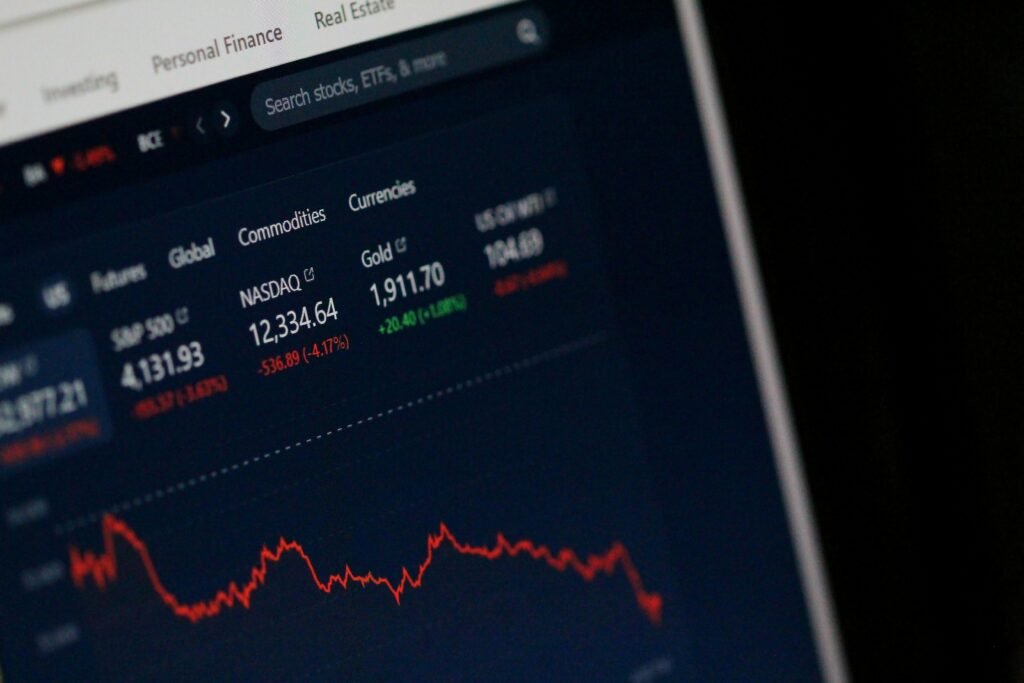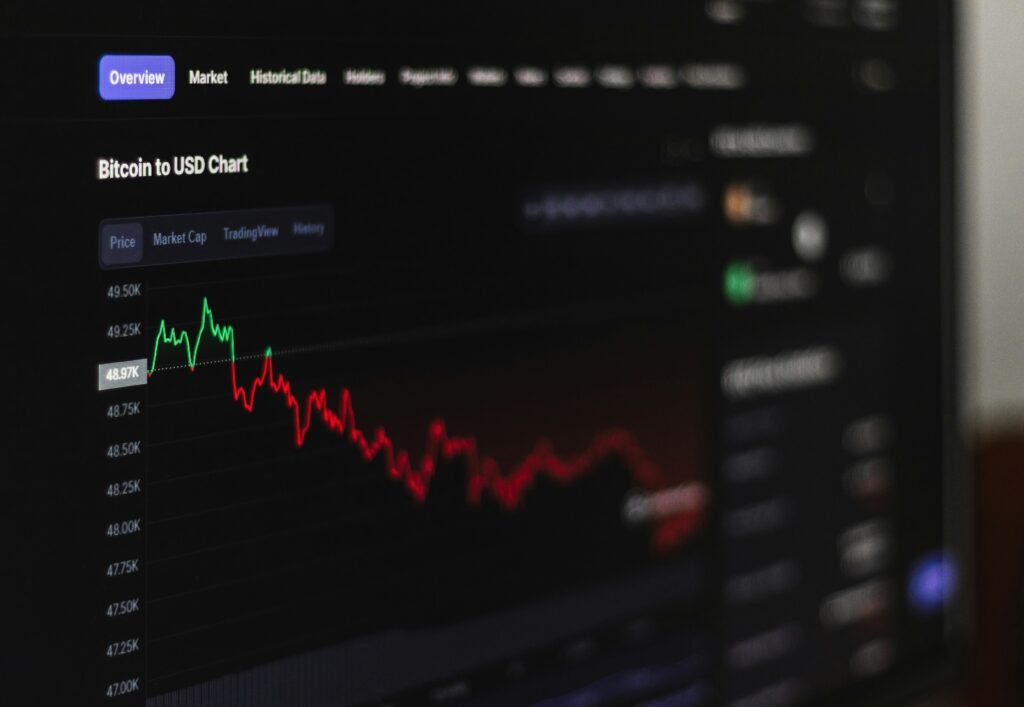World News
News publisher files class action antitrust suit against Google, citing AI’s harms to their bottom line on December 15, 2023 at 5:56 pm
A new class action lawsuit filed this week in the U.S. District Court in D.C. accuses Google and parent company Alphabet of anticompetitive behavior in violation of U.S. antitrust law, the Sherman Act, and others, on behalf of news publishers. The case, filed by Arkansas-based publisher Helena World Chronicle, argues that Google “siphons off” news […]
© 2023 TechCrunch. All rights reserved. For personal use only.
A new class action lawsuit filed this week in the U.S. District Court in D.C. accuses Google and parent company Alphabet of anticompetitive behavior in violation of U.S. antitrust law, the Sherman Act, and others, on behalf of news publishers. The case, filed by Arkansas-based publisher Helena World Chronicle, argues that Google “siphons off” news
© 2023 TechCrunch. All rights reserved. For personal use only.
News
French President Macron Sues Candace Owens for Calling His Wife a Man

Background
French President Emmanuel Macron and his wife, Brigitte Macron, have filed a defamation lawsuit in the United States against conservative commentator Candace Owens, following Owens’ repeated allegations that the First Lady is a man. The suit marks a notable escalation in a long-running campaign of harassment and conspiracy theories targeting Madame Macron, with the French couple now seeking legal redress beyond their home country.

Details of the Lawsuit
- Filed In: Delaware Superior Court, United States
- Plaintiffs: Emmanuel and Brigitte Macron
- Defendant: Candace Owens and her business entities
- Counts: 22 counts, including defamation and “false light”
The suit describes Owens’ claims as “outrageous, libelous, and implausible fabrications,” asserting that they have subjected the Macrons to “relentless bullying” and a “campaign of global humiliation.” The Macrons allege that Owens has repeatedly ignored credible evidence, favoring sensationalism and conspiracy to profit from their personal lives.
Owens’ Statements and Actions
According to the legal filings:
- Owens published a podcast series called Becoming Brigitte, and created social media content with her 4.5 million YouTube subscribers, asserting that Brigitte Macron is actually a man named Jean-Michel Trogneux (the name of Brigitte’s brother).
- Owens also marketed merchandise and monetized content centered around these false claims.
- She publicly declared that she would “stake [her] entire professional reputation” on these allegations, despite being repeatedly confronted with contrary evidence and direct denials from the Macrons.
The Macrons’ Response
The Macrons argue that:
- The conspiracy theories have caused “significant economic harm,” including the loss of business opportunities.
- The campaign has turned their personal lives into fodder for profit-driven lies, causing “global humiliation and relentless bullying”.
- Owens continued her efforts despite knowing the claims were false, choosing to double down rather than retract her statements.

Context and Precedents
This lawsuit is unusual in that a sitting world leader is personally suing a foreign media personality in another country’s courts. Notably:
- Brigitte Macron previously won a defamation case in France against individuals who spread similar rumors, although the verdict was overturned by an appeals court on “good faith” grounds; that matter is still under review in France’s highest court.
- Legal experts highlight that American libel law sets a high bar for public figures like the Macrons, requiring proof that Owens acted with “actual malice”—knowing falsity or reckless disregard for the truth.

What’s Next
The Macrons are seeking both compensatory and punitive damages, as well as a public correction of the record. Owens has stated she will address the lawsuit on her own podcast, but had not commented further as of the time of filing.
This high-profile case spotlights the difficulties public figures face in combating viral misinformation, while also raising questions about the limits of free speech, defamation laws, and international jurisdiction in the social media age.
Business
The U.S. Dollar Faces Its Biggest Shakeup in 60 Days

Unprecedented Change on the Horizon
America’s financial system is experiencing sweeping transformation. A remarkable series of events—including landmark crypto legislation, China’s major reduction in U.S. Treasury holdings, and escalating friction between President Trump and Federal Reserve Chair Jerome Powell—signals a pivotal shift for the U.S. dollar and the future of global finance.

Congress Passes Groundbreaking Crypto Legislation
The GENIUS Act and More
- Congress passed the GENIUS Act, the first U.S. federal framework for regulating dollar-backed stablecoins. President Trump signed the bill into law, calling it a “historic” piece of legislation that ushers digital currency into a new era.
- The act sets strict requirements: stablecoin issuers must be 100% backed by liquid U.S. dollar assets or short-term Treasuries, with mandatory monthly public disclosures and robust consumer protections.
- The GENIUS Act is joined by two companion bills:
- The CLARITY Act, which transfers jurisdiction for digital asset regulation and clarifies agency authority over crypto exchanges and brokers.

- The CBDC Anti-Surveillance State Act, which prohibits the Federal Reserve from issuing a retail central bank digital currency without congressional approval, effectively banning a U.S. government “digital dollar” CBDC.
China Dumps U.S. Treasuries to 16-Year Low
- China, America’s largest foreign creditor for many years, reduced its holdings of U.S. Treasuries to $757 billion in April 2025, the lowest since March 2009 and now ranks behind Japan and the UK.
- This sale is part of a long-term strategy: diversifying foreign reserves beyond the dollar, bolstering gold holdings, increasing use of the yuan in global trade (including via Belt and Road), and insulating China from U.S. economic sanctions.

Implications:
While China remains a major holder, its steady sales draw global attention to the sustainability of U.S. debt financing and the dollar’s status as the world’s reserve currency.
Trump vs. the Fed: The Power Struggle Intensifies
- President Trump has escalated public criticism of Federal Reserve Chair Jerome Powell, calling him “stupid” and blaming him for weakening the U.S. economy through high interest rates.
- Trump has repeatedly suggested Powell should resign and has expressed interest in appointing someone more aligned with his push for aggressive rate cuts, especially if re-elected. Despite speculation about Powell’s job security, legal hurdles make a sudden firing unlikely before his term ends in May 2026.
- Trump’s criticisms underscore longstanding tensions between the executive branch and the traditionally independent central bank, particularly over the direction of interest rates.

The Digital Dollar Goes On-Chain
- The GENIUS Act clears the way for regulated, dollar-backed stablecoins, enabling a digital form of the U.S. dollar that is fully backed by actual dollars or Treasuries.
- This approach is presented as a distinct alternative to central bank digital currencies: designed for transparency, consumer protection, and market-driven innovation, not for increased government surveillance.
- Stablecoins issued under this law are expected to make the U.S. dollar more adaptable and useful in global digital markets, supporting dollar dominance in a rapidly evolving landscape.

Market Impact: Crypto Leaders, Gold, and DeFi Technologies Rally
- The runup to and passage of these crypto laws have coincided with significant moves in financial markets:
- Gold prices neared all-time highs and other safe-haven assets like silver remained elevated.
- Major cryptocurrencies surged on optimism about U.S. regulatory clarity and the dollar’s official move into digital form.
- DeFi Technologies (DEFT), a significant player in digital asset investment and management, reported Q1 2025 revenues of C$62.7 million (US$43.1 million) and a dramatic increase in net income. Analysts project continued growth, and the stock has delivered strong annual returns—outpacing many major assets.
The Big Picture
- These unprecedented developments represent the most significant change to the dollar system since the U.S. left the gold standard or the Federal Reserve was established.
- America’s response to global monetary competition is now being shaped by a digital dollar, regulatory innovation, and shifting international alliances.
- The next 60 days are primed for continued disruption, with the financial world watching closely for the long-term effects on the U.S. dollar’s dominance and the broader global order.
News
Iran’s $40 Million Bounty on Trump Explained

The Origins of the Bounty
In July 2025, a shocking campaign emerged from Iran: a $40 million bounty was publicly placed on former U.S. President Donald Trump. This unprecedented move is rooted in escalating tensions following recent U.S. military strikes on Iranian nuclear facilities—actions reportedly authorized by Trump. The campaign was organized by a group calling itself Blood Covenant (sometimes referred to as “Blood Pact”), which has direct links to former employees of Iran’s state-run propaganda network.

The Fatwa and Religious Backing
The bounty is more than just a financial reward. It is underpinned by a fatwa—a religious edict—issued by several prominent Iranian clerics. These clerics labeled Trump an “enemy of Allah” and declared that his killing would be a religious duty for Muslims. The campaign’s website, thaar.ir, displays Quranic verses and promises not only the cash reward but also spiritual benefits, such as entry to paradise and the title of “defender of Islam,” to anyone who carries out the act.
How the Fundraising Works
- Crowdfunding Platform: The campaign is run through an Iranian website, thaar.ir, which claims to have raised over $40 million for the bounty. The site features images of Trump in crosshairs and calls for “retribution against those who mock and threaten the Supreme Leader Ali Khamenei”.
- Religious Messaging: The platform invokes religious language, urging believers to “strive with your wealth and your lives in the cause of Allah,” making the campaign a call to jihad.
- Broad Support: Analysts note that this campaign reflects a wide consensus among Iranian religious and governmental authorities, with the message amplified across Iranian media and society.
Key Figures and Organizations
- Hossein Abbasifar: Investigations have identified Hossein Abbasifar, a former employee of Islamic Republic of Iran Broadcasting (IRIB), as a key figure behind the campaign. Metadata from the website links him to the project, potentially exposing him to international sanctions.
- Blood Covenant: The group organizing the campaign operates “under the aegis of the Iranian regime,” according to the Middle East Media Research Institute (MEMRI), suggesting at least tacit approval from powerful factions within Iran.

Government Response and Denials
While the campaign has been widely promoted in Iranian media and by clerics, Iran’s President Masoud Pezeshkian has publicly distanced his government from the bounty and the fatwas, stating that such religious decrees have “nothing to do with the Iranian government or the Supreme Leader.” However, state-affiliated media and hardline clerics continue to endorse the campaign, emphasizing the religious justification for targeting Trump.
U.S. and International Reaction
- Security Concerns: U.S. authorities remain on high alert, given Iran’s history of plotting attacks on American leaders. The State Department has indicated it is using all available tools, including sanctions, to hold those responsible accountable4.
- Trump’s Response: Trump himself has publicly downplayed the threats, responding with characteristic humor when asked about warnings that he could be targeted by a drone while at his Mar-a-Lago estate89.
The Bigger Picture
The $40 million bounty on Trump is a stark reminder of the enduring animosity between the U.S. and Iran, especially in the wake of military escalations and the 2020 killing of Iranian General Qassem Soleimani. The campaign is notable for:
- Its scale and publicity, leveraging modern crowdfunding techniques.
- The fusion of religious and political motives, making the threat both ideological and material.
- The potential for escalation, as hardline elements within Iran continue to push for retribution.
Conclusion
Iran’s $40 million bounty on Donald Trump is a chilling development at the intersection of geopolitics, religion, and digital mobilization. While the actual funds raised remain difficult to independently verify, the campaign’s existence—and the broad support it appears to enjoy among certain Iranian factions—underscores the volatility of U.S.-Iran relations and the enduring risks faced by high-profile political figures.

 Business4 weeks ago
Business4 weeks agoPros and Cons of the Big Beautiful Bill

 News2 weeks ago
News2 weeks agoIran’s $40 Million Bounty on Trump Explained

 Entertainment2 weeks ago
Entertainment2 weeks agoBehind the Scenes of Neighborhood Watch

 Health4 weeks ago
Health4 weeks agoMcCullough Alleges Government Hid COVID Vaccine Side Effects

 Entertainment4 weeks ago
Entertainment4 weeks agoHow to Be an Industry Puppet (The Sabrina Carpenter Way)

 Entertainment4 weeks ago
Entertainment4 weeks agoJuror 25’s Behavior Sparks Debate Over Fairness in High-Profile Diddy Trial

 Entertainment3 weeks ago
Entertainment3 weeks agoAI Channels in Crisis? The Truth Behind YouTube’s New Policy Change

 Advice3 weeks ago
Advice3 weeks agoHow to Create Emotion in Film






























